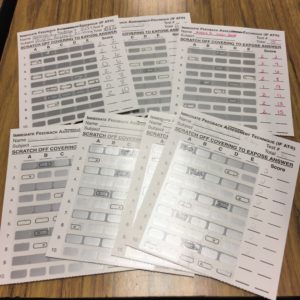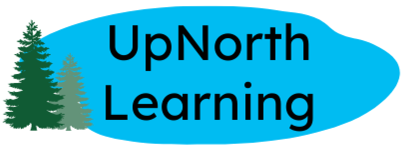It’s the time of year when discussion about how to effectively teach students to be successful on multiple-choice tests has increased.
Let’s be clear: Like just about every teacher out there, I hate test prep.
I want every day in my classes to be about authentic learning and assessment. There is rarely anything authentic about multiple-choice tests. On the other hand, the reality for my students, whether they are in my AP classes or my regular English 9 classes, is that they will face stressful multiple choice exams in high school. In Michigan, a portion of our state-mandated test is the SAT, so our students take the PSAT as 9th and 10th graders and the SAT as 11th graders. In 11th grade, they also take additional multiple choice tests in science and social studies, and many begin taking AP tests to earn college credit. I want my students to feel prepared for these tests, but I struggled for many years with how to do that in a way that still feels authentic for their learning. Then I discovered Team-Based Learning. I wrote about TBL when I first used it three years ago, but I thought an update was in order.
In all of my classes, we practice multiple-choice in small chunks, usually as 15-minute warm-ups, for example. I’m not a runner, but I’ve heard the key to being successful in a marathon is that runners don’t run a whole marathon as practice. They save that for the day of the big event in order to give their all. I have this same approach to test practice. I never give an entire practice test to students before they sit for state or national exams. I understand others may disagree, but in giving shorter practices throughout the year, I am able to help students diagnose where they are struggling.

Recently completed IF-ATs from my AP class.
A few years ago, I adopted Team Based Learning (TBL) and the Immediate Feedback Assessment Technique (IF-AT); both have transformed the way my students practice multiple choice. Here is how test prep looks in my classes.
Process
I pass out a multiple-choice practice and each student takes it individually. We emphasize “talk to the text,” so they mark up their copies and do their best to select the best answer to each question. (This usually takes 15-20 minutes depending on length and difficulty of the multiple-choice section.)
Then I pass out a scratch-off answer sheet (which I purchase from Epstein Education) to each table and a new set of the questions. My students are seated at tables of six, as suggested in Team-Based Learning.
Students work as a table to reason through and argue for the best answer. When they think they have it, they scratch off that selection on their answer sheet. If they are right, there is usually a lot of cheering. If they are wrong, they go back to the question and try again.
At the end, I score them on their performance on the group passage, or sometimes on a combination of their group and individual scores. Plus, I ask them to write appeals if they believe a question is flawed or do correctives to explain why the correct answer is right with evidence from the test section.
Benefits
I’m a proponent of TBL and IF-AT for these reasons:
- My students are having fantastic, challenging conversations about the passage and about the way questions are asked.
- They are metacognitive in their thinking as they usually go around the table and each student defends the answer he or she has. I’ve often heard students say as they are trying to defend, “Yeah, that’s not the right answer. I don’t know why I put that.”
- Students who are struggling get a window into the thinking habits and testing strategies of students who are successful in a way that is non-threatening.
- They learn to read better, to defend their thinking more clearly, and to discern best answers.
- Their anxiety about the test practice is down and their learning is up.
We do a lot of small practices year-round with the literature they are reading at first and then with released and practice tests. I can track the data on how they do individually to estimate their scores and to help them identify what they need to work on. Finally, I feel great about using class time for test practice because so much more goes on during one of our TBL sessions that is valuable to their reading, thinking, and learning.
Resources
I first learned about Team-Based Learning during a conversation on Twitter. My interest was piqued by this video showing the process.
I wanted to know more about the process, so I purchased Team-Based Learning in the Social Sciences and Humanities: Group Work that Works to Generate Critical Thinking and Engagement by Michael Sweet and Larry K. Michaelsen. This book offers the pedagogical reasoning behind this practice and step-by-step instructions for processes and protocols.
You’ll find resources, connections, experts, and workshops available at the Team-Based Learning Collaborative. I have never been able to attend a workshop, but it looks like their annual workshop is coming up in Orlando March 2-4, 2017.
Finally, if you are on Twitter, you can follow the Team-Based Learning Collaborative to learn more.
